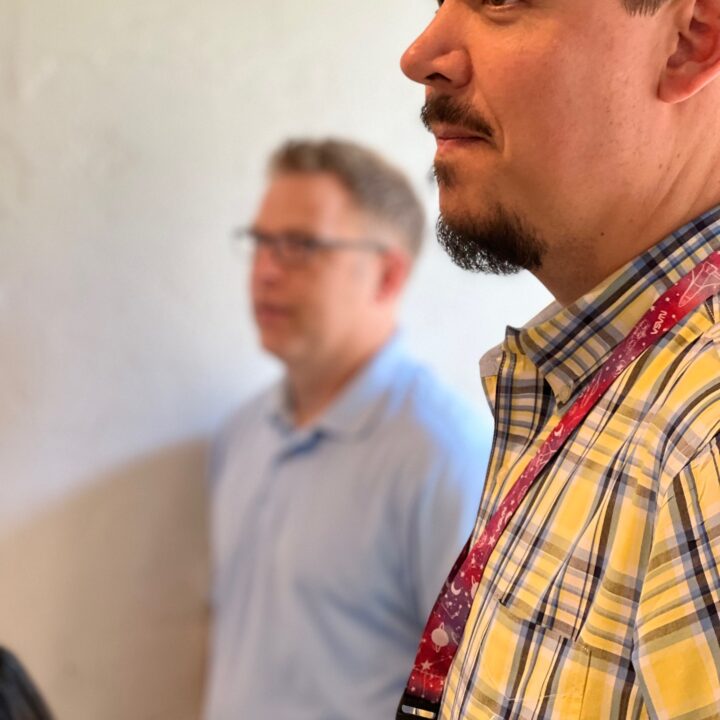Nonprofits are increasingly turning to technology to better serve their communities and achieve their social impact goals. Custom software can be a powerful tool to help organizations streamline their operations, improve their communication with stakeholders, and increase efficiency and effectiveness.
But is it the right investment for every nonprofit and, more importantly, is it right for yours? We’ll explore what custom software is and the factors you should consider when deciding whether to invest in this kind of technology.
What is Custom Software?
Custom software is software that is specifically designed and developed to meet a unique need and/or specialized requirements. Unlike off-the-shelf software solutions, custom software is tailor-made to address the specific challenges and opportunities facing an organization.
True Custom Software vs. Hybrid Solutions
It’s important to note that the term “custom software” may be used to refer to both entirely custom-built projects and highly customized platform-based projects.
Truly custom-built software is built from the ground up; sometimes this is called a “greenfield” project. This is akin to building a brand new house where the layout, materials, interiors, and additional customizations will be assembled and made entirely to suit.
Software built using a platform-based approach will leverage existing templates and modules and foundational backend infrastructure. This is similar to the early 20th century Sears houses-in-a-box, where tried and true models can be assembled quickly, cost-effectively, and with room for additional customization. Salesforce’s application-platform-as-a-service falls in this category as does the Asemio Rapid Application Development platform.
It’s not a perfect metaphor, but it illustrates the main point. Nonprofits should consider which type of custom software would be the best fit for their organization’s specific needs.
Is Your Organization Ready for Custom Software?
Before investing in custom technology solutions, nonprofit leaders should assess whether that’s the right approach for their organization or not.
Here are some factors to consider:
- Readiness: Do you have a clear understanding of your internal workflows with insight into what’s working well and where you have challenges? If your workflows are rapidly changing or you don’t have a clear understanding of what they are, you’re better off investing in an off-the-shelf tool or even something as simple as a series of spreadsheets. (Long-term changes in workflow, however, are to be expected and a good partner will build systems that are adaptive over the long run.)
- Uniqueness: Have you explored possible off-the-shelf solutions to ensure something doesn’t already exist that meets your needs? This is a trade-off that some organizations will need to make; if an existing tool meets 80% of your needs, are you willing to adapt your processes? We’re not fans of technology driving process, but sometimes the changes are immaterial and worth the benefit you get back in the form of saved time and resources.
- Long-term Goals: Do you have a clear vision for where your organization is headed? Are you anticipating growth that may require more robust technology and will serve as a differentiator? A custom solution can be a powerful asset in achieving your data and technology maturity goals.
By realistically considering these factors, nonprofits can determine whether they are ready for a software upgrade and whether custom software is the right solution. If you answered no or were unsure about these questions, there are steps your team can take to strengthen your current data collection processes and workflow before investing in new software.
If you’ve already considered these factors and have affirmative answers for all or most of them, that’s a good indicator that you’ve set yourself up for a successful transition to new technology.
Sustainability: Weighing the Long-term Investments
Custom software is a financial commitment and nonprofits should carefully consider the long-term sustainability of the investment. However, a well-timed investment can pay off in the long run by improving efficiency, streamlining operations, and allowing the organization to better achieve its social impact goals.
Consider the following factors when evaluating the long-term sustainability of a custom software investment:
- Support and maintenance: Custom software requires ongoing support and maintenance to ensure that it continues to meet the organization’s needs over time. Nonprofits should factor in the cost of ongoing support and maintenance when evaluating the sustainability of custom software investment.
- Scalability: Custom software should be scalable to meet the organization’s future needs. Nonprofits should consider the organization’s long-term goals and ensure that the custom software is capable of adapting to support those goals.
- Cost-effectiveness: Investing in custom software may be more cost-effective than off-the-shelf solutions in the long run, especially if the organization’s current systems are inefficient and require significant manual effort. By streamlining operations and automating processes, custom software can help nonprofits save time and money.
In Summary
Investing in custom software can be a powerful differentiator for nonprofits and it’s important to carefully evaluate what kind of investment is right for the organization. A well-timed investment in custom software can pay off in the long run, while a poorly-timed one can waste precious resources. It’s vital to critically assess the technology options that are available so that you can make an informed decision that benefits your staff and enables your organization to better achieve your social impact goals.
If your head is spinning as you start to synthesize this information, sign up for a free 30-minute consultation with one of our experts here.









